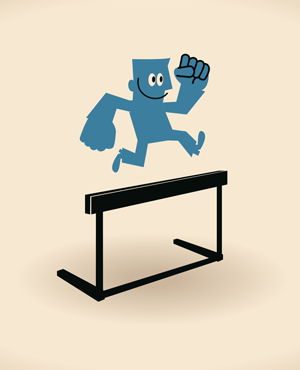 When you turn 80, do you want to snowboardor decay?
When you turn 80, do you want to snowboardor decay?
Almost 80, Papa, armed with wrenches, stomps his way underneath cars. Papa lifts heavy loads and dumbbell weights. Papa’s phone rings off the hook. Papa might outlive me.
Around 80, my former landlady crept up stairwells, frail. She avoided winter sidewalks for fear of falling. She talked to psychics to stave off loneliness. Yet, she gardenedand her soul was beautiful.
A key difference between the two? Papa led a fit, active life; my landlady, less so.
During my mid-30s, I got in top shape. I looked healthier than I did in my 20s. I exercised six days a week: an hour of weights daily topped with plenty of cardio. Yes, I had reached my prime. But then I stopped exercising. A mere two years later, I had aged twenty years. My stomach fattened. I had bouts of bronchitis. Kids on school buses would offer me their seats. Worse, I felt nausea on and off. In the last year, nausea worsened.
Just three months ago, I started hitting the gym six days a week again. My posture firmed. My stomach shrunk. My shoulders widened. Nausea disappeared.
But this week, nausea returned. My boyfriend said, “Whenever you feel blah is the best time to train.” So, I hit the gym.
During the first ten minutes, I felt an urge to vomit. But around the ten-minute mark, endorphins startedand sickness stopped. Near the end of the session, I felt bliss. The rush of endorphins carried me through the night to the next work out.
Last week, I stumbled on an eye-opener: a book called Younger Next Year: Live Strong, Fit, and SexyUntil You’re 80 and Beyond. Written by Chris Crowley and Dr. Henry S. Lodge, the book confirmed why a friend of mine looks the same in his fifties as he did in high school. Why Papa looks the same in his eighties as he did in his fifties. And why an eighty-year old still wears his high school jeans.
The answer? Exercise. Six days a week, one hour per daynon-faillifelong.
But the flipside will scare you: hobbling rickety at age 60, plunging further to frailty each passing year. If that describes you, stop the decay todaythrough exercise.
Chris Crowley and Dr. Henry S. Lodge share the secret to skiing the alps at 80 versus hobbling to a resident home toilet. (Because Crowley and Lodge wrote so well, I cite much of them verbatim):
“You should exercise hard almost every day of your lifesay, six days a week. And do strength training. Lift weights two of those six days” (p. 14). “Four of the six have to be devoted to aerobic exercise no matter what” (p. 81).
You need to treat daily exercise with the same commitment as a career. Show up; train hard. No excuses.
“Most of what we dread about getting older is actually decay.
[W]e are struck with real aging, but decay is optional” (p. 33).
“You can turn sixty and get functionally younger every year for the next five or ten years” (p. 8). Yes, exercise might make you look younger ten years from now, whether you’re 30, 50, or 70.
You can also turn sixty and stay in similar shape up until 85 (or older)through exercise. Without exercise, you’ll decay daily.
“Over 50% of all illness and injuries in the last third of your life can be eliminated by changing your lifestyle
” (p. 7). With exercise, you’ll have half the diseases you’d otherwise have had.
“People with advanced emphysema and heart disease do much better with exercise. People recovering from cancer do better with physical exercise. Depression does better with exercise” (p. xxi).
“I have several patients in their nineties who have had open-heart surgery recently, and all are doing beautifully. All were fit and active before and all remained so afterward. That’s no coincidence” (p. xxii).
“A man who’s thirty pounds overweight, smoking a pack a day, but exercising every day has a lower statistical mortality than a thin, sedentary nonsmoker” (p. 74).
But eat healthy and avoid McDonald’s and Pizza Hut. “And eat less of everything” (p. 15).
Also, “there have to be people you care about and a reason to keep yourself alive. If not
you’ll die” (p. 18).
Most of all, find a welcoming gym. Join it.
So, what’s the message? Keep moving, or you won’t.
